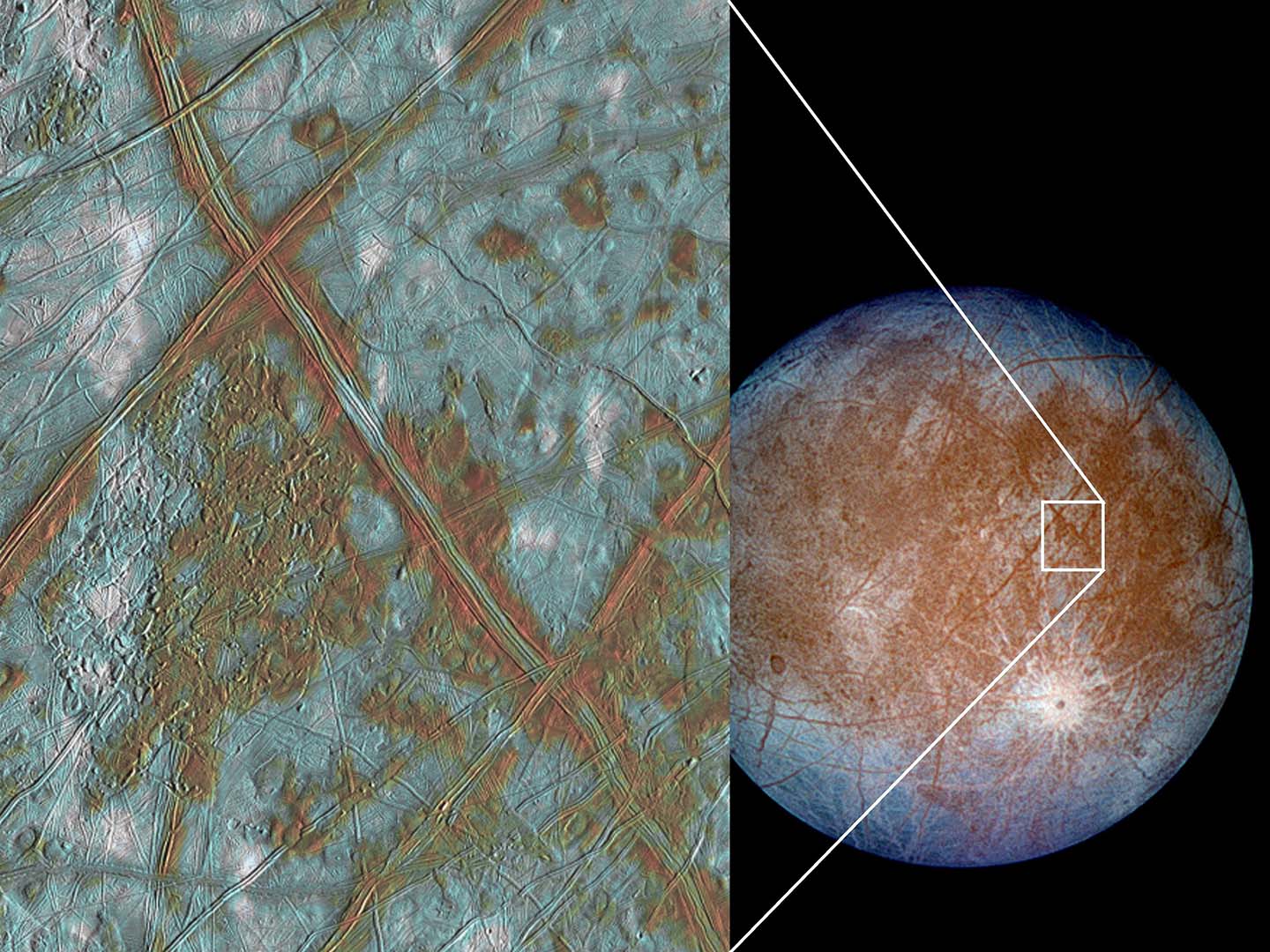Press Release
Johns Hopkins APL Teams with NASA JPL to Visit Jupiter’s Moon, Europa
Jupiter’s icy moon, Europa, is considered one of the most promising places in the solar system to search for signs of life under its frozen ocean crust, and a new NASA mission to explore this potential is moving forward from concept to development.
In the late 1990s, NASA’s Galileo mission to Jupiter produced strong evidence that Europa, about the size of Earth’s moon, probably harbors a vast, salt-water ocean. “In addition to the ocean, this icy world may have the chemical ingredients and energy sources necessary to support life, so we want to investigate whether Europa is a habitable world,” said Louise Prockter, the Deputy Project Scientist on the Europa team and a planetary scientist at the Johns Hopkins University Applied Physics Laboratory (APL), in Laurel, Maryland.
Since 2011, APL has been working with NASA’s Jet Propulsion Laboratory (JPL) in Pasadena, California, on a mission concept to visit Europa. On June 17, the joint mission concept to survey Europa and investigate its habitability passed its first major review by the agency and entered the development phase, known as formulation, with JPL managing the mission.
“This partnership represents a historic opportunity for our two institutions to collaborate,” said Mike Ryschkewitsch, head of APL’s Space Exploration Sector. “Europa has fascinated us ever since our first views of this frozen world, and this team has the right skills to accomplish this challenging mission.”
The Europa mission plan calls for a spacecraft to be launched to Jupiter in the early 2020s, arriving in the distant planet’s orbit after a journey of several years. The spacecraft would orbit Jupiter about once every two weeks, providing many opportunities for close flybys of different regions of Europa’s surface. The mission plan includes 45 flybys, during which the spacecraft would image the moon’s icy surface at high resolution and investigate its surface and tenuous atmospheric composition, as well as the structure of its interior and icy shell.
NASA selected instruments for the Europa mission’s scientific payload on May 26. Institutions supplying instruments include APL and JPL, as well as Arizona State University, Tempe; the University of Texas at Austin; Southwest Research Institute, San Antonio; and the University of Colorado, Boulder.
For more information about NASA’s mission to Europa, visit: http://www.nasa.gov/europa.
